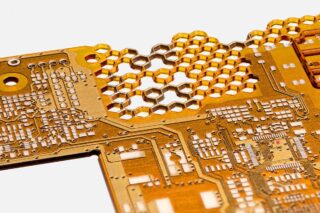Japanese researchers have developed the world’s first wooden satellite, named LignoSat. This innovative spacecraft is set to launch aboard a SpaceX rocket in September 2024. It is expected to mark a significant step toward reducing space debris and minimizing environmental impact. According to the engineers behind the project, wood will burn completely when the device re-enters the atmosphere. This will prevent the formation of metallic particles upon its return to Earth.
Space debris, also known as space junk, poses a significant threat to satellites and spacecraft. Currently, more than 27,000 tracked pieces of debris orbit Earth at speeds of approximately 15,700 mph in low Earth orbit. The risk of collision with this debris is a pressing concern for the space industry.
To address this issue, Japanese researchers from Kyoto University and the forestry company Sumitomo Forestry came up with a wooden satellite that promises a fiery end upon re-entry, ensuring minimal debris and a greener future for space exploration
The Wooden Wonder
LignoSat is a cube that measures 10 centimeters on each side. Unlike traditional satellites made of metal and other materials, LignoSat is manufactured entirely from magnolia wood. The choice of wood material serves a crucial purpose: upon re-entry into Earth’s atmosphere, the satellite is expected to burn completely, avoiding the creation of additional metallic particles.
During a press conference earlier this week, Takao Doi, an astronaut and special professor at Kyoto University, emphasized the importance of favoring non-metallic satellite construction. As space agencies worldwide grapple with the growing problem of space debris, innovative solutions like LignoSat offer hope for a cleaner orbital environment.
Launch and Testing
Next week, developers will hand over LignoSat to the Japan Aerospace Exploration Agency (JAXA). From there, it will hitch a ride aboard a SpaceX rocket. Destination: the International Space Station (ISS). The satellite will be released from the Japanese experimental module on the ISS, allowing scientists to assess its resilience and durability in space.
Data collected during its mission will help researchers evaluate LignoSat’s performance under extreme temperature changes and stress. Scientists aim to gain insights into sustainable satellite design and contribute to cleaner space exploration by studying this wooden wonder.
Other Space Safety Initiatives
It is not the first time Japanese stakeholders have looked at ways to minimize space junk. For example, Japanese space technology company Astroscale is collaborating with Ansys Government Initiatives (AGI) on the ELSA project (The End-of-Life Services by Astroscale). This project aims to improve situational awareness, enable life extension and other on-orbit servicing, and offer end-of-life options with active debris removal.
ClearSpace is another initiative worth mentioning. This Swiss start-up plans to grab abandoned satellites using a giant claw and fling them back to Earth. Upon re-entry, these satellites will burn up in the atmosphere, reducing the risk of space junk.
While LignoSat and the two other initiatives mentioned represent a significant leap forward, it’s essential to recognize that all satellite launches remain a major pollution source. Nevertheless, Japan’s commitment to innovation and environmental responsibility sets a positive example for the global space community.










